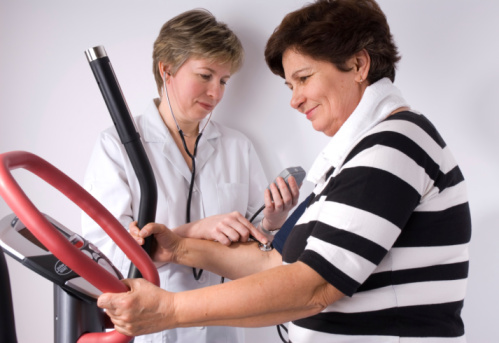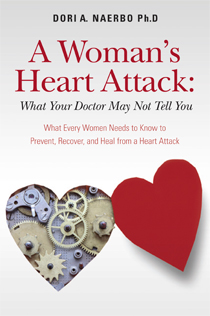From the time we start school we engage in daily physical activity. We participate in after school sporting events, such as soccer, football, volleyball, basketball, baseball, swimming, track and field. For some, exercise became a daily habit, like brushing your teeth. The cardiovascular benefit of exercise for the prevention of heart disease is a proactive approach, and according to Journal of the American Medical Association[i] an essential and necessary line of defense for both primary and secondary prevention. Exercise has shown to reduce the progression of heart disease; however, it is not widely recommended by the medical community.
After a heart attack, all survivors should be enrolled in cardiac rehabilitation or cardiac rehab for short. Cardiac rehab is a medically supervised, customized program, which includes counseling and supportive lifestyle change management. One purpose of cardiac rehab is secondary prevention―to mitigate the progression of your disease, and reduce future risk of another event. Cardiac rehab also sets safe limitations and exercise boundaries. After a heart attack, most people are afraid to do any exercise. Participating in cardiac rehab gives reassurance, and peace of mind knowing medical staff in nearby, unfortunately, cardiac rehab is not always recommended to every person that has suffered a cardiac event.
Barriers to Exercise after a Heart Attack
One barrier as to whether or not a physician will recommend exercise is associated with their own physical activity. Physically fit physicians with counseling training were more likely to recommend a prescriptive exercise routine, according to one study conducted on a group of women physicians who followed the American College of Sports Medicine and the American Heart Association guidelines. Dr. Pimlott[ii] states, “Regular aerobic exercise is the one miracle drug that is hard to get people to take. But it is much easier to do so, and will grant you greater credibility with your patients if you take the medicine yourself.” The adage ‘walk the talk’ and ‘drinking your own medicine’ seems to apply here.
Other barriers include:
- Not referred to cardiac rehab (including women, older patients, patients with limited education, and non-English-speaking patients[1])
- Healthcare reimbursement schemes (who’s is going to pay?)
- A patient falls through the cracks because there is an assumption made that the primary care physician or cardiologist should manage lifestyle modifications, i.e. smoking, dietary and exercise plans. (patient ping-pong)
- Communication gap
- Patient education
- Overly cautious (reinforcing sedentary behavior)
Cardiac Rehab for All
Cardiac rehab should be offered to every patient, and it is not. In my experience after consecutive heart attacks, cardiac rehab was never offered to me.
After my first attack, I joined a gym and exercised six days a week, but I did not know my limitations and this was frightening because there was no guidance. One day after one of my training, I had another heart attack. I began to question. Did I exercise too much? Did I do the wrong type of exercise? Was this attack exercise related?
Numerous cardiac survivors; when asked about exercise and cardiac rehab report that it was not offered. Cardiac rehab gives patients safe exercise parameters under supervision, which is extremely valuable because it will give the cardiac survivor a sense of well-being and most importantly, they understand their safe limits. Many cardiac survivors are afraid to do anything for fear of having another attack; they believe that exercise will stress their heart and since their physician did not recommend it as part of their ‘medication’ routine, they do not exercise. The importance of exercise needs to be emphasized.
It is essential for cardiac survivors to understand that the importance of exercise is equally essential as taking their medication. If cardiac survivors understood the importance of exercise to their survival, perhaps, they would be more inclined to exercise. Lifestyle modifications fall under the remit of the primary-care physician. However, the primary-care physician defers back to the cardiologist because you are a heart patient and herein lies the problem of the “missed handoff” [1] and patient ping-pong occurs. Communication is the key to getting doctors and patients engaged. It takes a community to help you recover.
What are your thoughts? Do we need more awareness?
For more information read, A Woman’s Heart Attack: What Your Doctor May Not Tell You: What Every Women Needs to Know to Prevent, Recover, and Heal from a Heart Attack. Although, this book was written with the female heart in mind, there are many aspects that are equally important for men recovering and healing from a heart attack or heart failure.








Speak Your Mind